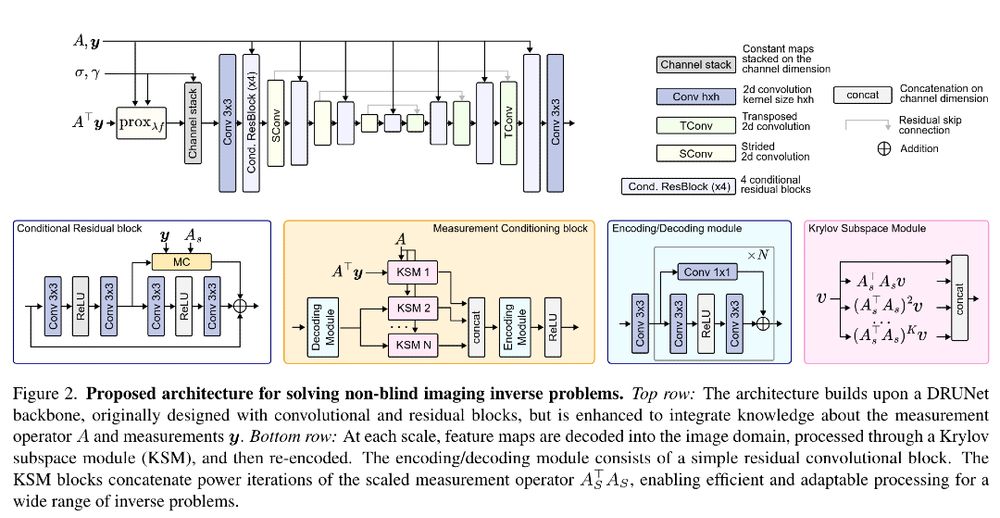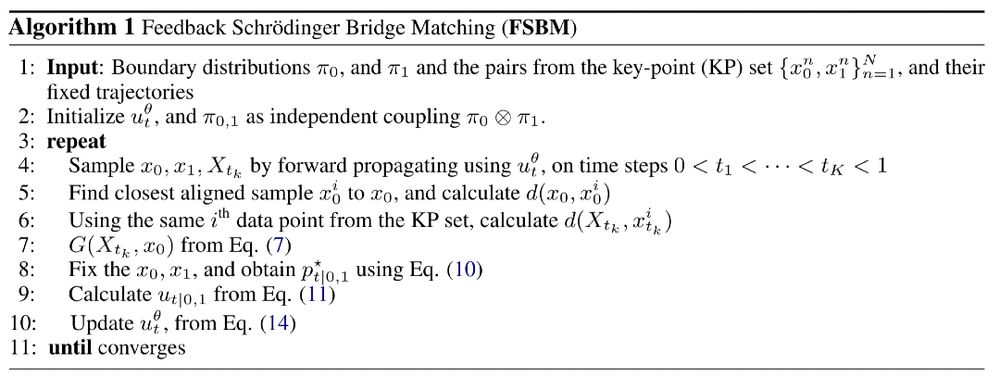
Previously intern @SonyCSL, @Ircam, @Inria
🌎 Personal website: https://lebellig.github.io/
Tianhong Li & Kaiming He arxiv.org/abs/2511.13720
Diffusion models in pixel-space, without VAE, with clean image prediction = nice generation results. Not a new framework but a nice exploration of the design space of the diffusion models.



Tianhong Li & Kaiming He arxiv.org/abs/2511.13720
Diffusion models in pixel-space, without VAE, with clean image prediction = nice generation results. Not a new framework but a nice exploration of the design space of the diffusion models.
Solving the Schrödinger bridge pb with a non-zero drift ref. process: learn curved interpolants, apply minibatch OT with the induced metric, learn the mixture of diffusion bridges.




Solving the Schrödinger bridge pb with a non-zero drift ref. process: learn curved interpolants, apply minibatch OT with the induced metric, learn the mixture of diffusion bridges.

Transport between two distributions defined on different spaces by training a noise-to-data flow models in the target space, conditioned on the source data and leveraging Gromov–Wasserstein couplings

Transport between two distributions defined on different spaces by training a noise-to-data flow models in the target space, conditioned on the source data and leveraging Gromov–Wasserstein couplings
Unexpected result: swapping the SD-VAE for a pretrained visual encoder improves FID, challenging the idea that encoders' information compression is not suited for generative modeling!


Unexpected result: swapping the SD-VAE for a pretrained visual encoder improves FID, challenging the idea that encoders' information compression is not suited for generative modeling!
New method to train flow maps without any pretrained flow matching/diffusion models!


New method to train flow maps without any pretrained flow matching/diffusion models!
High-density regions might not be the most interesting areas to visit. Thus, they define a new Riemannian metric for diffusion models relying on the Jacobian of the score


High-density regions might not be the most interesting areas to visit. Thus, they define a new Riemannian metric for diffusion models relying on the Jacobian of the score
Join on Sept 11 at 15:00 CET! www.ri.se/en/learningm...

Join on Sept 11 at 15:00 CET! www.ri.se/en/learningm...


Also really looking forward to the poster sessions and all the exciting conferences on the program!
📄 hal.science/hal-05140421


Also really looking forward to the poster sessions and all the exciting conferences on the program!
📄 hal.science/hal-05140421



📄 Ambient diffusion Omni: arxiv.org/pdf/2506.10038
📄 Ambient Proteins: www.biorxiv.org/content/10.1...


📄 Ambient diffusion Omni: arxiv.org/pdf/2506.10038
📄 Ambient Proteins: www.biorxiv.org/content/10.1...



Energy-Based Models for Generative Modeling" by Michal Balcerak et al. arxiv.org/abs/2504.10612
I'm not sure EBM will beat flow-matching/diffusion models, but this article is very refreshing.


Energy-Based Models for Generative Modeling" by Michal Balcerak et al. arxiv.org/abs/2504.10612
I'm not sure EBM will beat flow-matching/diffusion models, but this article is very refreshing.
They propose an algorithm to traverse high-density regions when interpolating between two points in a diffusion model latent space.


They propose an algorithm to traverse high-density regions when interpolating between two points in a diffusion model latent space.
📄 https://arxiv.org/abs/2504.11172


📄 https://arxiv.org/abs/2504.11172
I'm curious about its modality translation capabilities 👀
📄 https://arxiv.org/abs/2504.11171
🐍 https://huggingface.co/ibm-esa-geospatial


I'm curious about its modality translation capabilities 👀
📄 https://arxiv.org/abs/2504.11171
🐍 https://huggingface.co/ibm-esa-geospatial
📰 https://arxiv.org/abs/2503.08915


📰 https://arxiv.org/abs/2503.08915
Feedback Schrödinger Bridge Matching introduces a new method to improve transfer between two data distributions using only a small number of paired samples!



Feedback Schrödinger Bridge Matching introduces a new method to improve transfer between two data distributions using only a small number of paired samples!


